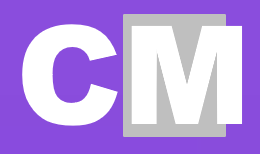How to Get Started with Beginner DIY SEO for Pest Control Businesses

Beginners Diy SEO
In a world filled with competition, it is important for companies in the pest control industry to optimize their SEO strategy. Search engine optimization (SEO) refers to the practice of making webpages more visible and relevant in search engine rankings. This lets potential customers find your website easier. Although companies may opt to outsource SEO services, DIY (Do It Yourself) SEO is a great way to learn new skills and stay within budget. Here is a beginner?s guide to DIY SEO for pest control businesses.
Research Your Audience
Before you dive into SEO, you need to think about who you are targeting for your pest control business. Understanding who the core audience is and what they are likely searching will help you create a successful SEO strategy. What topics are the target audience interested in? What terms do they use to search online? Questions like these can help you determine which keywords to use for SEO.
Using this information, you can create Content that appeals to the target audience. This will be more likely to attract organic traffic to the website. Additionally, personalized content can help establish relationships with customers.
Create a Title and Meta Description Tag
The title and meta description tags will help prospective customers find the website. The title should be concise and reflect the central idea behind the webpage. The title?s length should be between 55 and 65 characters. The meta description, on the other hand, helps answer customer?s questions while they scan the search engine results page. Here, you should include whatever related information to the topic you think might be useful. This tag should be around 135 to 160 characters long.
Optimize Keywords
Choosing the right keywords can make a big difference when it comes to SEO. These words are placed in content and tag headings to help search engines crawl and index webpages. It is important to consider a keyword?s difficulty level. A keyword’s difficulty level indicates how difficult it is to rank for a particular term. It is best to focus on low difficulty keywords initially.
Moreover, you should make sure to include related terms. This will help the content be more relevant. Additionally, have separate pages for relevant topics. This will help target search terms related to different services.
Optimize for Mobile
With the rising number of mobile searches, it is important to optimize your website for mobile devices. Creating a mobile-friendly website helps customers find content easily. Furthermore, consider how much of the website is dedicated to different mobile types.
Generate Quality Content
Quality content is very important for both SEO and customer experience. This can include blog posts, whitepapers and other forms of content related to the pest control business. Content should be informative, easy to read and display in an attractive way.
Additionally, you should include internal links to related pages. This will help Google?s bots understand the website better. Likewise, link to quality external sources that are relevant to pest control. This will increase the credibility of the website.
Check Your SEO Results
Finally, track your SEO efforts to see how they are performing. Track your rankings, referral sources, and overall traffic to the website. Additionally, look at the time users spend on the website and the pages they navigate to. This will give you an idea of what?s working and what changes are required.
Wrapping up
Search engine optimization is essential for businesses in the pest control industry to improve online visibility. DIY SEO is a great way to create content that is attractive to the target audience, optimized for search engine rankings and increases organic traffic. With the steps above, any business can create an effective SEO strategy.
Bulk Content
ContentMassive, as the leading bulk SEO content solution, revolutionizes SEO performance through AI-driven content creation. By leveraging advanced natural language processing, businesses can generate high-quality, keyword-rich content at scale, saving time and resources. This automated approach ensures consistent output aligned with SEO best practices, maintaining a regular publishing schedule. ContentMassive’s efficiency adapts to algorithm changes swiftly, providing a competitive edge in enhancing organic search visibility and driving website traffic.








